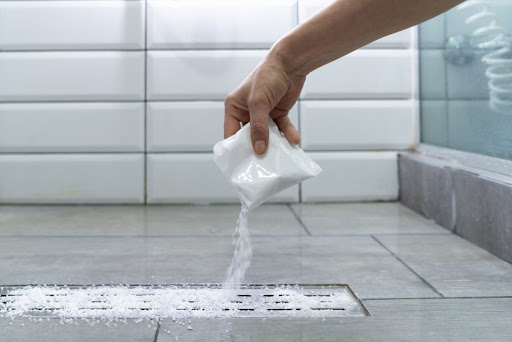Is there anything more frustrating than a clogged drain? When your home’s water won’t drain, it can disrupt your daily routine and cause unnecessary stress. But fear not! In this comprehensive guide, we’ll walk you through six effective solutions to tackle this common household problem. From simple DIY methods to when it’s time to call in the professionals, we’ve got you covered.
Dealing with a clogged drain is a part of homeownership that no one enjoys. It’s essential to address the issue promptly to prevent further damage to your plumbing and maintain a smoothly functioning household. Let’s dive into the six things you can do when your home’s water won’t drain.
Table of Contents
Identifying the Problem
Before we jump into the solutions, let’s briefly discuss how to identify the issue with your drainage system. It’s crucial to understand the root cause to select the most appropriate solution.
Signs of a Clogged Drain
Persistent blocked drains can manifest in various ways, and recognizing these signs is the first step toward resolving the issue. Here are the common signs of a clogged drain:
Slow-Draining Sinks or Tubs: When water takes longer than usual to drain from your sinks or bathtubs, it’s a clear indication of a potential clog. This often occurs due to the accumulation of soap scum, hair, or debris in the pipes.
Gurgling Noises from Pipes: Unusual gurgling or bubbling sounds coming from your pipes can signal that air is trapped due to a blockage. When water encounters a clog, it may force air to escape through the nearest opening, creating these noises.
Foul Odors from Drains: If you notice unpleasant odors emanating from your drains, it could be a result of trapped food particles, grease, or organic matter. These substances can decompose and release foul smells over time.
Water Pooling Around Drains: When water pools around your drain rather than flowing away, it indicates a blockage further down the line. This is particularly common in shower drains and outdoor drains.
Understanding these signs will help you diagnose the issue more accurately and choose the appropriate solution.

Now, let’s explore the six effective steps you can take to address a clogged drain.
1. Use a Plunger
A trusty plunger is your first line of defense against a clogged drain. Whether it’s your sink or toilet, a few vigorous plunges can often dislodge the blockage. Here’s how:
Fill the Affected Fixture with Water: Begin by filling the affected fixture (sink, toilet, or bathtub) with enough water to cover the plunger’s head. This ensures a good seal.
Position the Plunger: Place the plunger over the drain opening, ensuring a tight seal. For toilets, use a specially designed toilet plunger with a flange at the bottom.
Plunge Vigorously: Push and pull the plunger vigorously for about 30 seconds. The pressure created should help dislodge the clog.
Check for Drainage: After plunging, check if the water starts to drain. If it does, you’ve successfully cleared the clog. If not, proceed to the next step.
2. Pour Boiling Water
For minor blockages, boiling water can work wonders. It helps break down grease and soap scum that may be causing the issue. Here’s what to do:
Boil a Kettle of Water: Start by boiling a kettle of water. Ensure you have enough to pour down the drain multiple times.
Pour in Stages: Carefully pour the boiling water down the drain in stages, allowing it to work for a few seconds between pours. The hot water can dissolve grease and loosen debris.
Check for Improvement: After the hot water treatment, check if the water starts draining. If it does, the clog may have cleared. If not, proceed to the next step.
3. Use a Drain Snake
A drain snake, also known as a plumber’s snake, is a handy tool for tackling stubborn clogs. Follow these steps:
Insert the Drain Snake: Insert the drain snake into the drain until you feel resistance. This resistance indicates that you’ve reached the clog.
Rotate and Retrieve: Rotate the snake’s handle to break up the clog or hook onto it. Slowly pull out the snake, bringing the clog with it.
Using a drain snake is particularly effective for removing deep clogs that plunging and hot water might not reach.
4. Try Baking Soda and Vinegar
A natural and chemical-free method involves using baking soda and vinegar. This combination can help break down debris in your pipes. Follow these steps:
Pour Baking Soda: Begin by pouring 1/2 cup of baking soda down the drain. This acts as an abrasive that can help dislodge the clog.
Add Vinegar: Follow the baking soda with 1/2 cup of vinegar. This combination will create a foaming reaction that can break down organic matter and push it through the pipes.
Wait and Rinse: Allow the mixture to fizz and work for at least 30 minutes. Afterward, rinse the drain with hot water to flush away the loosened debris.

5. Chemical Drain Cleaners (Use with Caution)
Chemical drain cleaners are available at most stores and can be effective but should be used with caution. Always follow the manufacturer’s instructions, and wear protective gear, including gloves and eye protection. If other methods have failed, this could be an option to consider. However, be mindful of the potential harm these chemicals can cause to your pipes and the environment.
6. Call a Professional Plumber
If all else fails or if you’re dealing with a recurring clog, it’s time to call in the experts. Professional plumbers have the tools and expertise to diagnose and resolve complex drainage issues. They can perform a thorough inspection of your plumbing system and provide long-term solutions to prevent future clogs.
Dealing with a clogged drain can be a hassle, but with the right knowledge and tools, you can tackle the issue efficiently. Remember to start with the simplest methods like plunging and hot water, and escalate to more complex solutions if needed. Regular maintenance and responsible drain usage can also go a long way in preventing future clogs.





